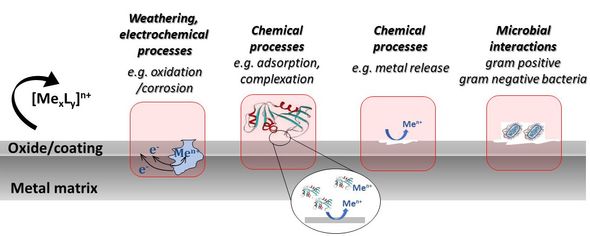Eva Blomberg
ASSOCIATE PROFESSOR
Details
Researcher
About me
The general field of my work is Physical Chemistry with specialisation in Surface and Colloid Chemistry, with strong competence in studying intermolecular interactions and adsorption of molecules (e.g. proteins, polymers, polyelectrolyte, polyelectrolyte multilayers and surfactants) onto surfaces utilising several different experimental techniques.
My current research activities focus on studies on biomolecule adsorption on different metal surfaces related to induced metal release and speciation in biological media and their toxicological response. Another main research direction involves the characterisation of surface and bulk properties of nano- and micron-sized metal particles, surface reactivity, surface-biomolecule interactions, metal release, and their links to toxicity, as well as colloid stability, antimicrobial properties and mobility and environmental fate of NPs.
The long-term research vision of this research is to gain an improved molecular and mechanistic understanding of surface chemistry and corrosion/oxidation processes on metallic materials, including non-functionalised nanoparticles (NPs) at different biologically and environmental relevant settings. Moreover, to understand how these processes correlate with human toxic effects that may occur via the main exposure routes; inhalation, digestion and skin contact.

These research issues are addressed via a highly interconnected interdisciplinary research team consisting of international experts in their respective fields, including material science, corrosion science, surface chemistry, biophysics, microbiology and nanotoxicology at KTH Royal Institute of Technology, Karolinska Institutet (KI) and AIMES-Center for the Advancement of Integrated Medical and Engineering Sciences, a joint centre between KI and KTH.
Impact: A fundamental understanding of prevailing chemical and surface processes on metal surfaces (e.g. nanoparticles) used for different applications is highly relevant from an applied perspective to assess potential human hazards and risks. Such knowledge enables smart material selections. The long-term benefit is reduced costs for industry and society and reduced health risks for consumers and patients. The outcome will contribute to environmental and health risk assessment and management and enable the possibility of material read-across and predictions of surface and metal release processes in biomolecule-containing environments. The research has high relevance for nanosafety and the United Nations sustainable development goal (SDG) 3 – “Ensure healthy lives and promote well-being for all at all ages”.
Courses
Chemistry of Materials (CK1260), teacher | Course web
Degree Project in Chemistry, Second Cycle (KD200X), examiner | Course web
Fundamental chemistry (CK1020), teacher, course responsible | Course web
General Chemistry 1 (KH1123), teacher | Course web
General Chemistry 2 (KH1124), teacher | Course web
Nanostructured Materials (KD2170), course responsible, teacher | Course web
Project in Chemistry (KD2905), examiner | Course web
Project in Chemistry (KD2910), examiner | Course web